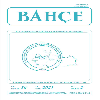Malatya'da yetiştirilen kayısıların (Prunus armeniaca L.) bazı fenolik madde içeriklerinin incelenmesi
Bu çalışma 2007-2008 yıllarında iki yıl süre ile yürütülmüştür. Malatya’da yoğun olarak yetiştirilen Hacıhaliloğlu, Kabaaşı ve Hasanbey kayısı çeşitleri ile bir Zerdali tipinin taze meyve örneklerindeki polifenol içerikleri UV- DAD, dedektörü ile yüksek basınçlı sıvı kromotoğrafisi (HPLC) cihazı kullanılarak belirlenmiştir. Elde edilen so-nuçlar neticesinde her bir kayısı örneğindeki polifenol miktarları istatisitiki olarak birbirinden farklılık göstermiştir (p
Investigation of some phenolic compound of apricots (Prunus armeniaca L.) grown in Malatya (Turkey)
This study was carried out in 2007 and 2008 years. In this study, apricot cultivars, Hacıhaliloğlu, Kabaaşı and Hasanbey, and a wild apricot form mainly grown in Ma-latya region was investigated in terms of phenolic contents by means of HPLC with UV-DAD detector. The results showed that, poliphenol contents varied statisticaly (p
___
- 1. Arts, C. W., B. Putte and P. C. H. Hollman, 2000. Catechin Contents of Foods Commonly Consumed in the Netherlands. 1. Fruits, Vegetables, Staple Foods and Processed Foods. Journal of Agricultural and Food Chemistry 48:1746–1751.
- 2. Bengoechea, M. L., A. I. Sancho, B. Bartolome, I. Estrella, C. Gomez-Cordoves and M. T. Hernandez, 1997. Phenolic Composition of Industrially Manufactured Purees and Concentrates from Peach and Apple Fruits. Journal of Agricultural and Food Chemistry 45, 4071± 40.
- 3. Cemeroğlu, B., 1992. Meyve ve Sebze İşle-me Endüstrisinde Temel Analiz Metotları. Ankara.
- 4. Fernandez de Simon, B., J. Perez-Ilzabre and T. Hernandez, 1992. Importance of Phenolic Compounds for the Characterization of Fruit Nectars. Journal of Agricultural and Food Chemistry 40: 1531–153.
- 5. Garcia-Viguera, C., P. Bridle, F. Ferreres and F. A. Tomas-Barberan, 1994. Influence of Variety, Maturity and Processing on Phenolic Compounds of Apricot Nectars and Jams. Zetchrift fur Lebensmmitel Untersuchung und Forschung 199:433–436.
- 6. Gardner, P. T., T. A. White., D. B. Mcphail and G. Duthie, 2000. The Relative Contributions of Vitamin C, Carotenoids and Phenolics to the Antioxidant Potential of Fruit Juices. Food Chemistry 68: 471–474.
- 7. Gülcan, R., A. Mısırlı., N. Eryüce., T. Demir, ve H. Sağlam, 2001. Kayısı Yetiştiriciliği. İzmir. 212.
- 8. Harris, R. S, 1997. Effect of Agricultural Practices on the Content of Foods. In R. S.
- 9. Macheix, J. J., A. Fleuriet and J. Billot, 1990. Fruit Phenolics. Boca Raton, FL:CRS pres.
- 10. Moure, A., J.M. Cruz., D. Franco., M. Dominguez., J. Sineiro., H. Dominguez., M. Nunez and J.C. Parajo, 2001. Food Chemical 72: 145
- 11. Prior, R.L. and G. Cao, 2000. Antioxidant Phytochemicals in Fruits and Vegetables: Diet and Health Implications. Horticulture Science 35: 588-592.
- 12. Radi, M., M. Mahrouz and Jaouad, A, 1997. Phenolic Content, Browning Susceptibility, and Carotenoid Content of Several Apricot Cultivars at Maturity. Horticultural Science, 32: 1087–1.
- 13. Sharaf, A., F. A. Ahmed and S. S. El-Saadany, 1989. Biochemical Changes in Some Fruits at Different Ripening Stages. Food Chemistry, 31: 19–28.
- 14. Uzelac, V.D., J.Pospisil, B. Levaj and K. Delonga, 2005. The Study of Phenolic Profiles of Raw Apricots and Apples and Their Puress by HPLC for the Evaluation of Apricot Nectars and Jams Authenticity. Food chemistry 91:373-383.
- 15. Wargowicz, M. J., 2000. Anticancer Propertiesof Fruits and Vegetables, Horticulture Science 35:573-575
- 16. Zavala, F. A. Y., S. Y. Wang, C. Y. Wang and G. A.G. Aguilar, 2004. Effect of Storage Temperatures on Antioxidant Capacity and Aroma Compounds in Strawberry Fruit. Lebensm- Wissu- Technol. 37: 687-695.
- ISSN: 1300-8943
- Yayın Aralığı: Yılda 2 Sayı
- Başlangıç: 1968
- Yayıncı: Atatürk Bahçe Kültürleri Merkez Araştırma Enstitüsü
Sayıdaki Diğer Makaleler
KAHRAMANMARAŞ DOĞAL FLORASINDA BULUNAN BAZI SALEP ORKİDELERİNİN KÜLTÜRE ALINABİLME OLANAKLARI
Şule KISAKÜREK, Bekir Bülent ARPACI
Ertan Sait KURTAR, Mehtap ÖZBAKIR, Ahmet BALKAYA
Dünya Elma ıslah programlarına genel bir bakış
Ersin ATAY, Fatma KOYUNCU, A. Nilgün ATAY
Ertan Sait KURTAR, Mehtap ÖZBAKIR, Ahmet BALKAYA
DÜNYA ELMA ISLAH PROGRAMLARINA GENEL BİR BAKIŞ
Nilgün ATAY, Ersin ATAY, Fatma KOYUNCU
HİLVAN İLÇESİ BADEMLERİNİN (Prunus amygdalus L.) SELEKSİYON YOLUYLA ISLAHI ÜZERİNE BİR ARAŞTIRMA
BAZI TRABZON HURMASI ÇEŞİTLERİNİN YALOVA EKOLOJİSİNDEKİ PERFORMANSLARI
